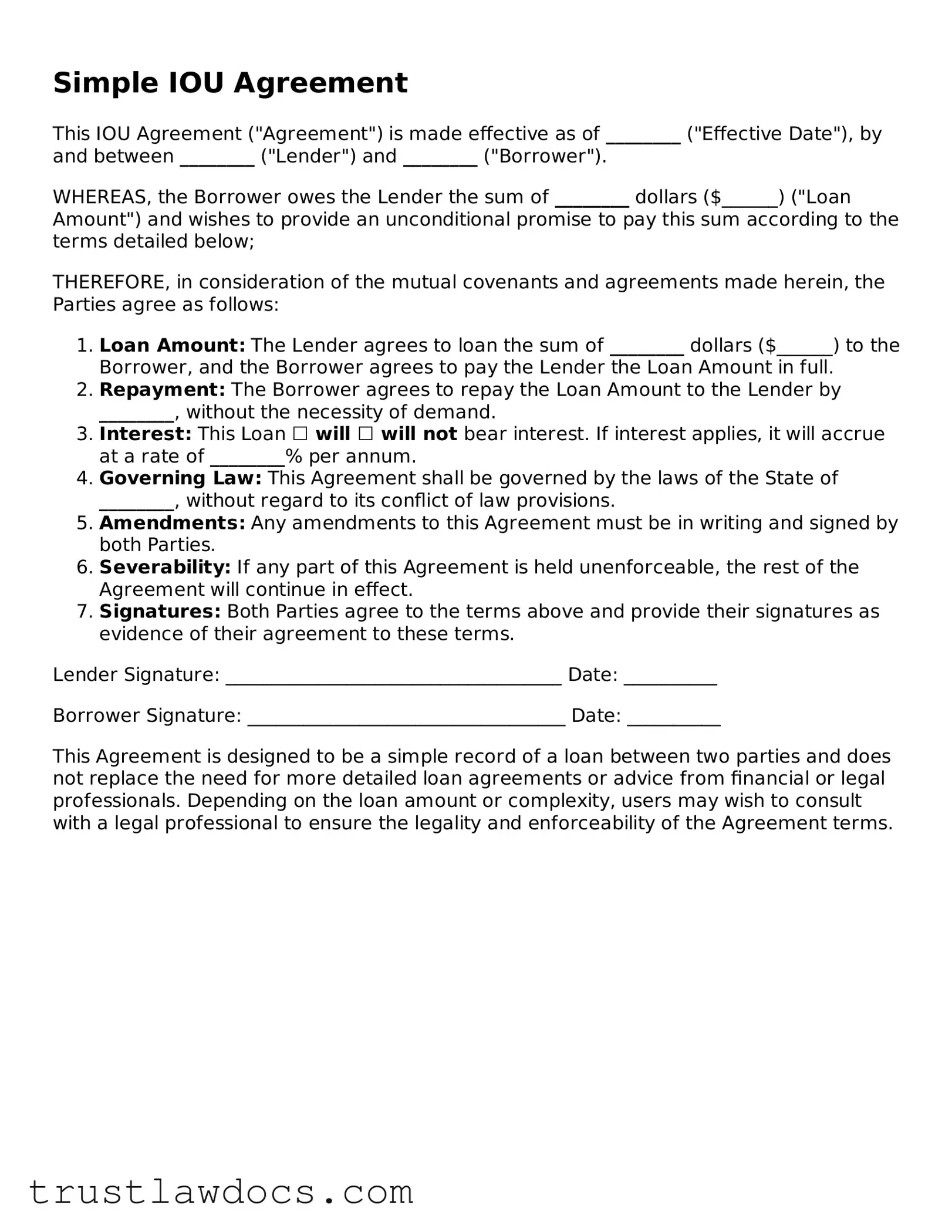A Promissory Note is closely related to an IOU. Like an IOU, a Promissory Note is a written agreement where one party promises to pay another a specific sum of money by a certain date. However, it goes a step further by detailing the repayment schedule, interest rates, and what happens if the borrower fails to repay the money. Essentially, it's a more formal and detailed IOU that provides greater legal protection for the lender.
A Loan Agreement shares similarities with an IOU in that it is a contract between a borrower and a lender where the borrower agrees to pay back the lent amount. The key difference is that a Loan Agreement is much more comprehensive, outlining terms and conditions, repayment plans, interest rates, collateral (if any), and legal recourse for default. This document is preferred for larger loans where both parties seek clear, legally binding terms and conditions beyond the simple acknowledgment of debt found in an IOU.
A Bill of Sale is somewhat akin to an IOU, in the sense that it acknowledges a transaction between two parties. However, its focus is on the transfer of ownership of goods, vehicles, or other property from a seller to a buyer, often indicating the purchase price. Unlike an IOU, which acknowledges debt, a Bill of Sale serves as evidence of a completed transaction and the transfer of ownership, stipulating the item sold, the sale amount, and signatures of both parties involved.
A Mortgage Agreement shares a core concept with an IOU, as it involves a promise to pay. Specifically, it is an agreement where a borrower promises to repay a lender the borrowed amount to purchase real estate, but the property itself serves as collateral for the loan. This document outlines the loan amount, interest rate, repayment schedule, and the lender’s rights in case of default. While an IOU acknowledges a debt, a Mortgage Agreement ties that debt to a physical asset and includes detailed terms governing the loan.
An Equity Agreement, common in business financing, parallels the IOU in its fundamental acknowledgment of a financial obligation. This agreement details the equity, or ownership interest, given to an investor in exchange for capital investment in a company. Although it doesn't typically involve a direct promise to repay a sum by a certain date, it acknowledges the investor's contribution and specifies their ownership percentage, rights, and obligations. Unlike an IOU, it is used in equity financing and involves exchanging capital for company stock or interest rather than a debt acknowledgment.
